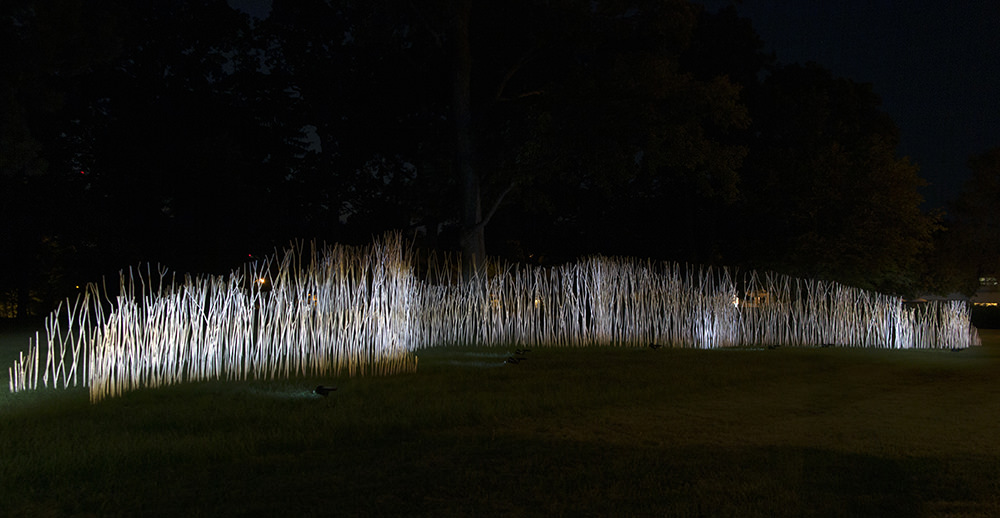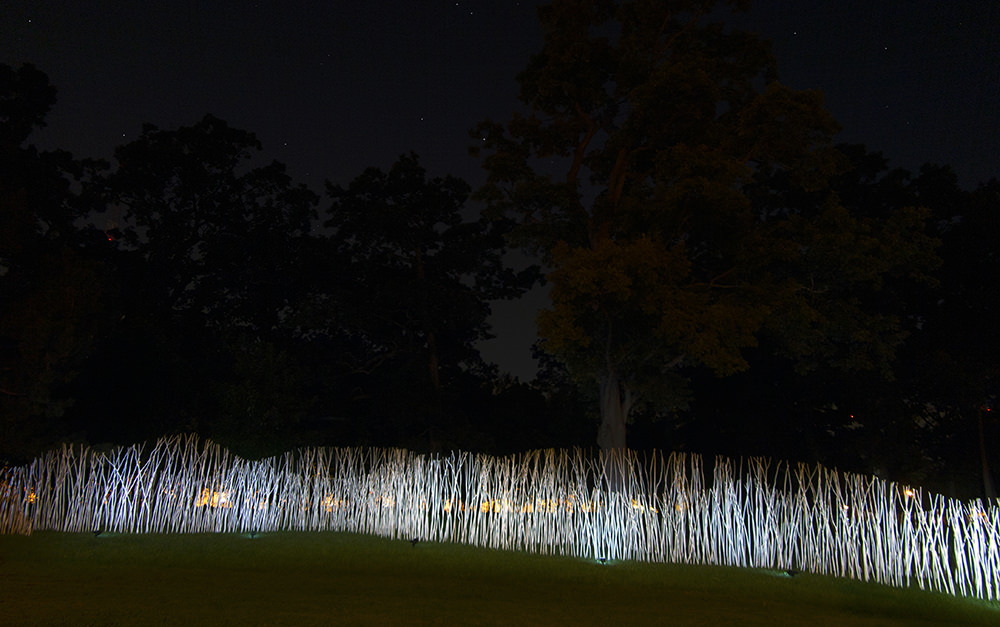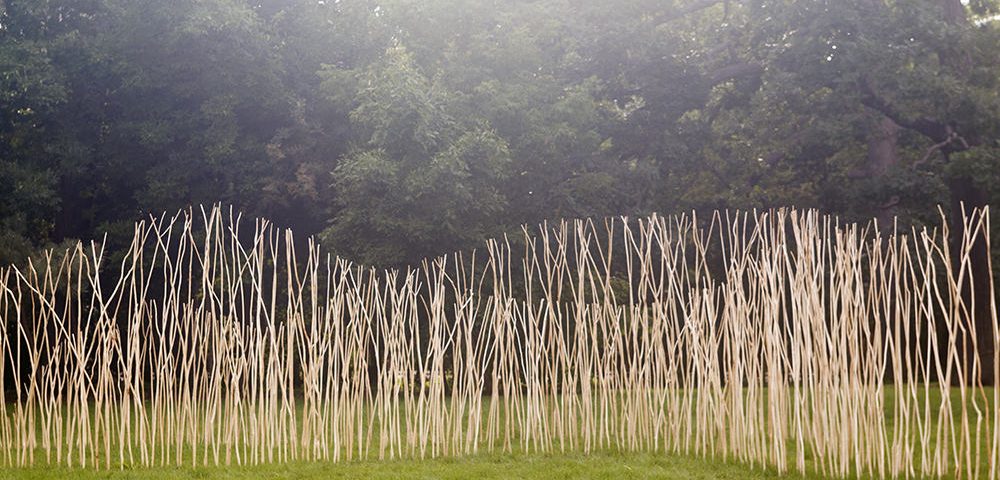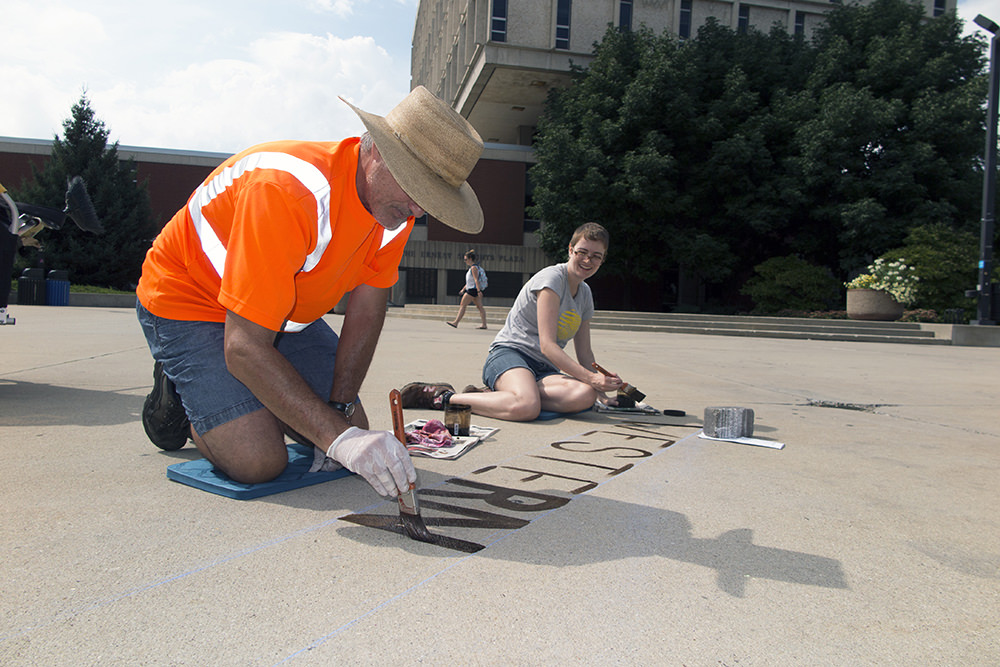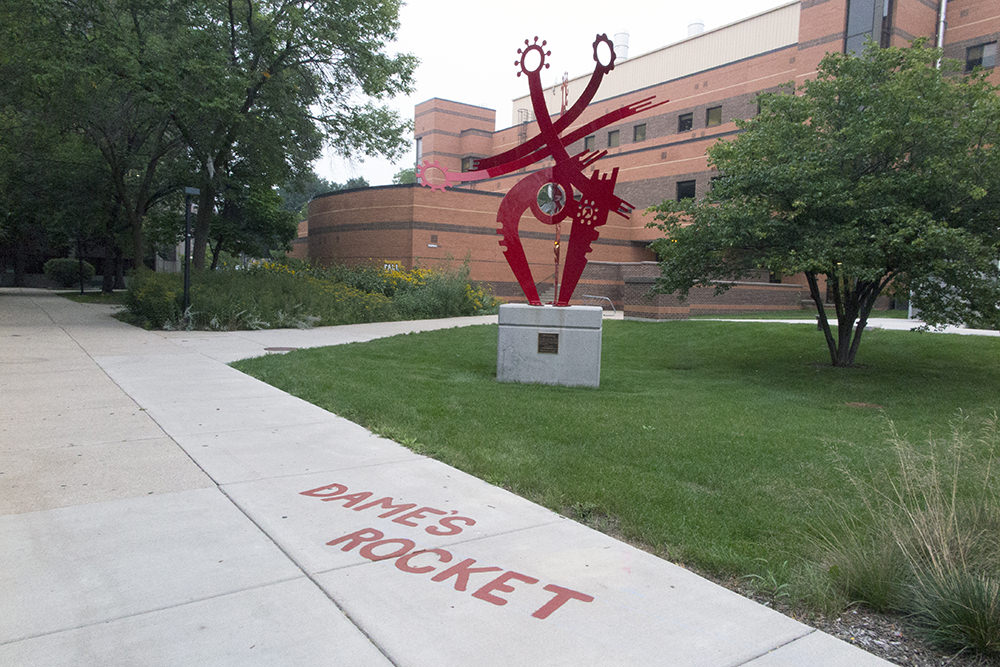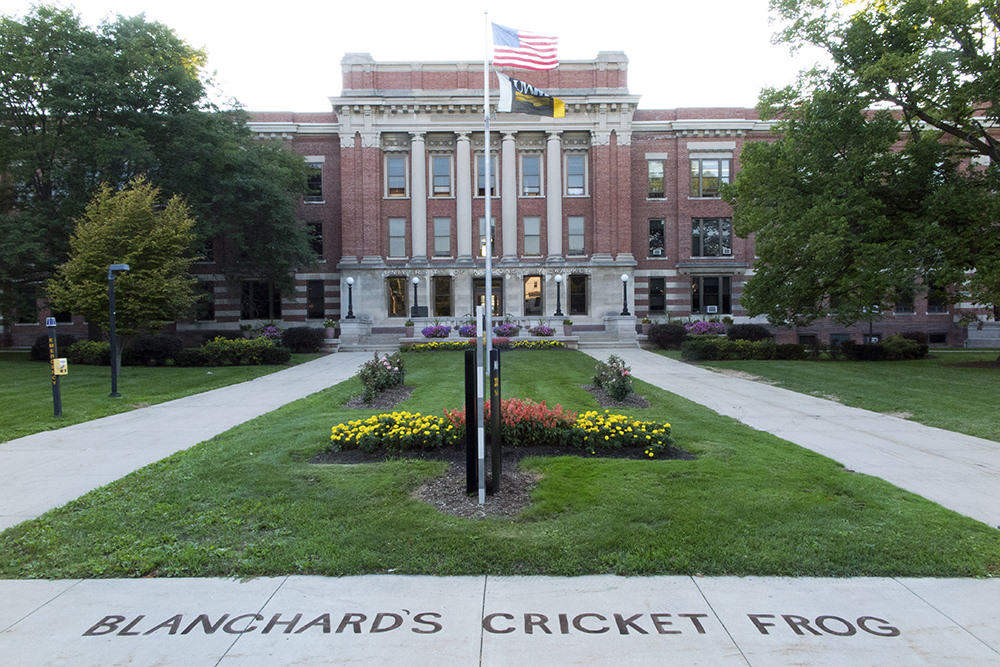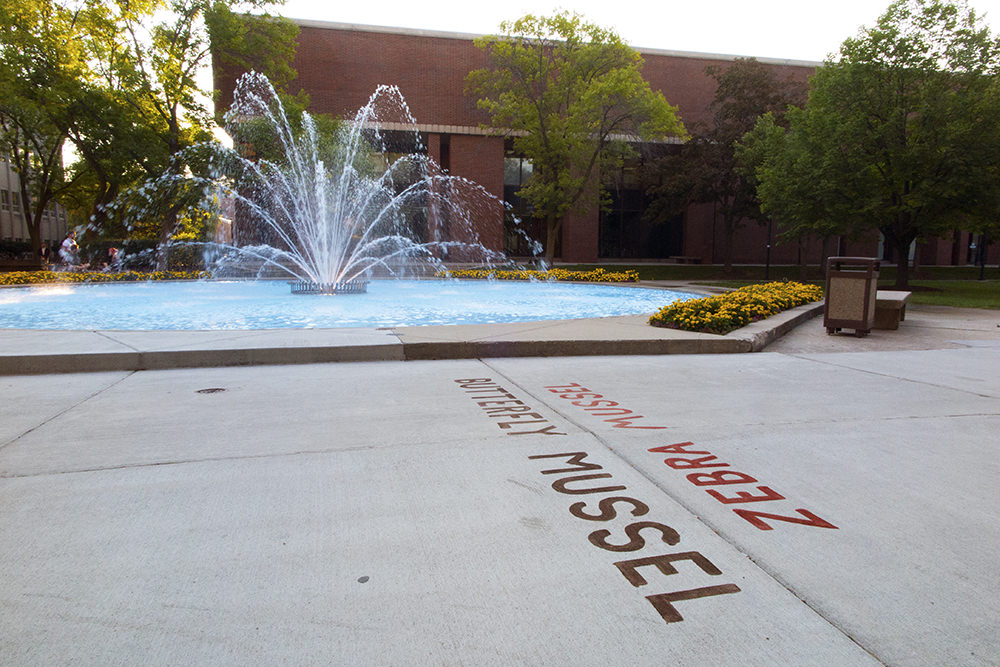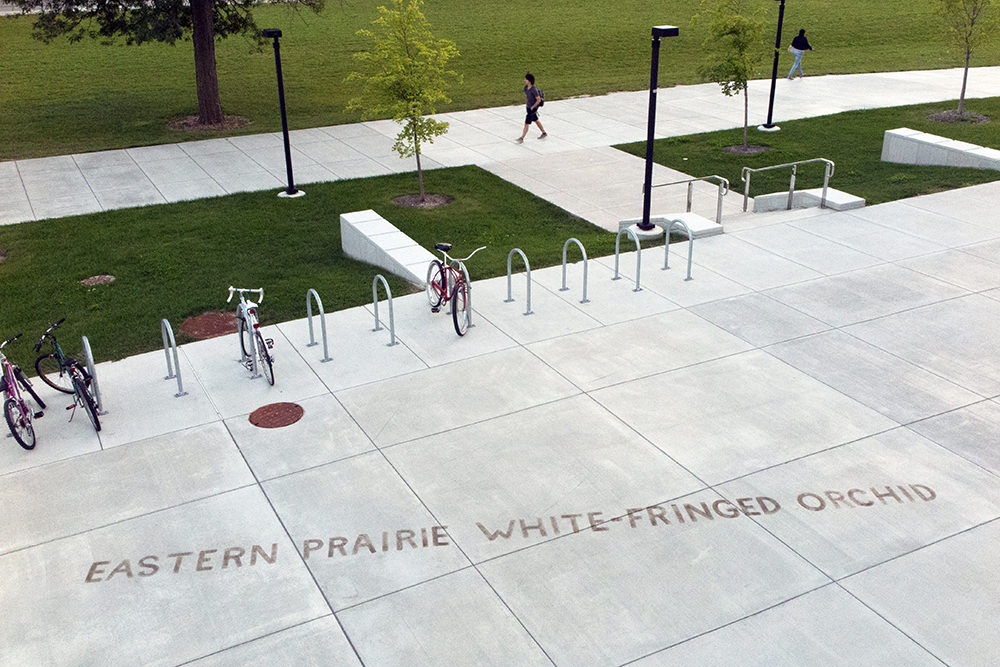I had the opportunity last fall, 2016, to create an art installation titled ECO ephemeral for the UW-Milwaukee Campus, in collaboration with Pamela Caserta Hugdahl, who curated the show as a part of her graduate thesis in art history.
ECO ephemeral was a four-part installation based on how we shape the environment and in turn how the environment shapes us. The center piece, located in the Golda Meir Library, was my painting titled Endangered Wisconsin. This painting consisted of 17 separate panels depicting endangered species in our state. My intent was to catalogue these species in a beautiful, scientific manner to draw attention to this potential loss.
What Shapes Us was designed with over 2000 pieces of invasive sandbar willow that my team and I harvested, debarked then embedded into the ground at the corner of N. Downer Ave. and E. Edgewood Ave.

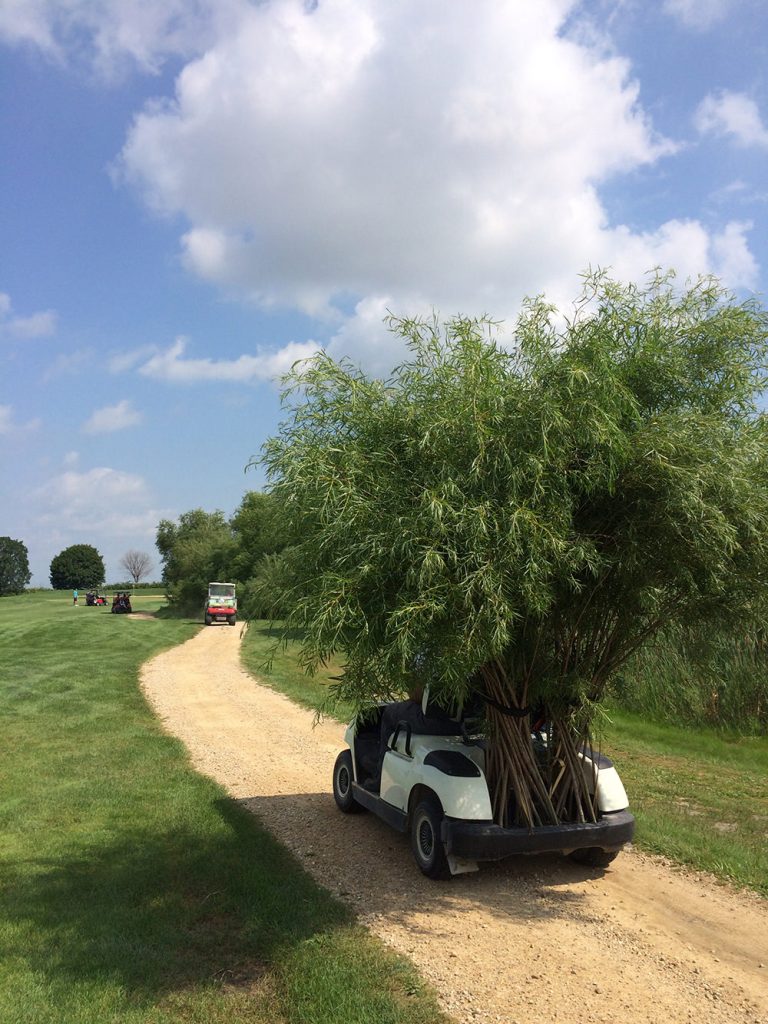
This 100 foot long installation was arranged in a fractured double helix/wave formation in order to represent ourselves molded by wind, water and time. The willow was illuminated at night with solar garden lights lending an otherworldly floating sensation.
What We Shape was a 2 part installation whereby my team and I dyed the names of various endangered Wisconsin species [black] and invasive species [red], for passersby to happen upon on their commutes between classrooms. The dyes used were all organic and designed to fade with time and foot traffic.
Pamela worked with Max Yela in Special Collections to exhibit artists’ books that also responded to this environmental theme.
Here I am with Pamela painting the names on the sidewalks. My hope was that students and faculty who stumbled upon the names of the different plants and animals would take a moment [away from their head-down-phone-oriented posture] to pause in the midst of their busy schedules to reflect on the meaning of these names.
From the painting to the willow installation to the names of the endangered and invasive plants and animals and the artists’ books, this project not only addressed the importance of our responsibility as stewards of this planet, but also the repercussions for short-sighted human-centric land management practices. The fact that this show and installation took place on a large urban campus adds another layer to the story and role of the project and hopefully in some small way initiates a dialogue of change.
Press Coverage
Thanks go out to Journal Sentinel Milwaukee for reviewing this project: “Thomas Ferrella’s art captures the fleeting nature of life”
Published
Read the book, ECO Ephemeral, by Pamela Caserta Hugdahl. It’s downloadable online for free or you can purchase a hard copy.
